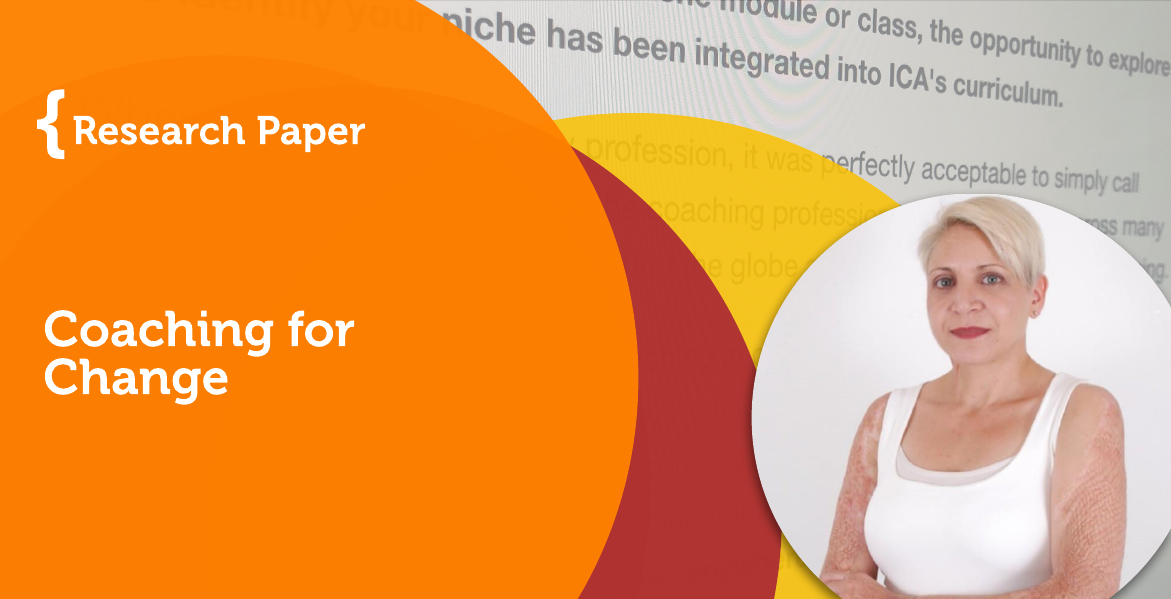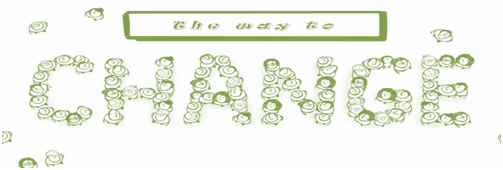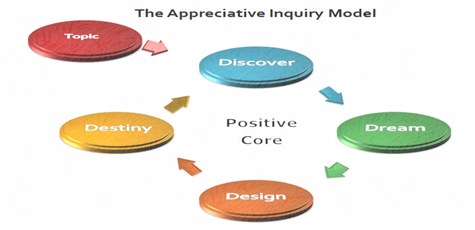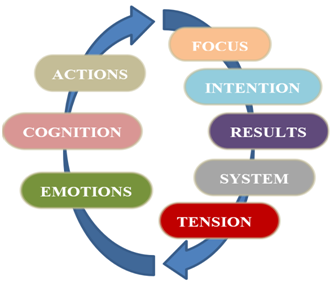
Research Paper By Kalli Anagnostou
(Personal Development & Trauma Informed Coach, ATHENS)
Introduction
One of the things that always attracted me into coaching is CHANGE. In the sense that through the coaching process a person can move from where he/she is and getting into a different state of mind, acquiring different and/or new habits and making choices that will conclude in achieving their goals.
It is a magical journey through which the people can transform and grow, and through whom the people in their environment can also change affecting the world around them.

The Power of Change
The Business Dictionary [1]describes changes as
the process of causing a function, practice, or thing to become different somehow compared to what it is at present or what it was in the past…
This definition, that does not focus on the results of change in either positive or negative way but instead allows the person to see change as an opportunity to learn and grow through experimenting and experiencing, to me is positively affecting and empowering.
With every single thing that we do, feel and respond to, consciously or unconsciously, every day of our life, we refer to the familiar, already existing pathways of our brain. Whereas, every time we try and/or expose ourselves to something new, we create new pathways and new patterns.
Jo Marchant, PhD in genetics and medical microbiology, author of “Cure: A Journey into the Science of Mind Over Body”, in her article “What Stress Does to Your Brain” [2], explains
your brain reflects the way that you think throughout your life. You kind of shape it by your thoughts and your behaviors. If you play violin for eight hours a day, then the parts of the brain responsible for helping you to play the violin will get larger. If you’re thinking stressful thoughts for the whole day then those parts of the brain are going to get larger and other parts of the brain will deteriorate.
The question though is, how do we achieve change? In theory, once we make up our mind on changing a routine, a habit or a behavior, our brain should be able to alter or rewrite its content. In practice,though, we find that change does not always come easily to people and even lets them discouraged.
Change, and self-change for that matter, is a process with many stages, from which we all go through in one way or another and learn by.So, before engaging to it, we move from not thinking about changing a behavior to thinking about it, to planning and testing out ways to do so, before we even actually get to practice, make a habit of and own it.
According to the Transtheoretical Model of behavior change (TTM)[3], developed by James Prochaska& Carlos DiClemente in the1980s (Prochaska, et al. 1992 and 2002), the stages are:
- The stage where we do not feel we are in need of change and subsequently not think about doing anything.
- We see the areas in which our behavior is dysfunctional/problematic and wonder about what we could somehow do differently.
- We start to process and design the plan for change in detail.
- This is the stage in which we decisively take action and work towards achieving the goals we have set and make the desired changes.
- Maintenance, the stage where we make a habit of change and stick to it.
- Relapse, the stage in which we may slip back on previous behaviors and is connected in a way with the maintenance stage. It is not of course necessary for every person to go through lapse and re-lapse.
[3]The Transtheoretical Model of behavior change is based on more than 25 years of research on behavior change for a variety of health behaviors. This model is a blueprint for effecting self-change in health behaviors and can be readily applied in health, fitness, and wellness coaching.

Coaching through Change
Within the coaching concept, where the person/coachee works with a coach, we can find a safe,trustful and prosperous environment[4], that enables the coachee to open up, speak freely and find motivation to explore what it is that he/she wants and / or needs to change and how to achieve it.
As every person can be in different stages of change for different areas or behaviors the coaches are there to help recognize when and where they are likely to move forward towards action or where they might slip back in previous behavior patterns and address accordingly to that so as to move on, reach their goals and maintain them.
In the first stages of change (Precontemplation, Contemplation), where the coachee has an unclear perspective about his goal, even competences,there are models that offer us a simple yet methodical and straight forward strategic plan to work with.
An example of that and one that through my work with people have seen to be extremely beneficial is the Grow Model, a 4-step model and framework that highlights, elicits and maximizes inner potential and can help the coachee to set and design his plan of action down to the last detail and see it through (Sir Whitmore, 2009).
[4]

G stands for the Goal(s)the coachee sets to achieve, where he wants to go, using specifics -we make sure the goal is SMART (Specific, Measurable, Agreed, Realistic, Time phased), PURE (Positively stated, Understood, Relevant, Ethical), and CLEAR (Challenging, Legal, Environmentally sound, Appropriate, Recorded)[5]. The R is the Reality, where the coachee is now, his strengths, his boundaries, the means he has available now. This step creates awareness on the coachees’ actual state and reveals the internal and external obstacles he encounters. O, meaning Option, explores the possibilities the coachee has and examines his alternatives, what can be done, what has worked in the past, how will it feel like, what it will mean. The final W represents the When – Where – Will / Wrap Up and works as an overall summary of the previous steps providing a specific plan of actions for implementation of the identified steps. Here is where the coachee starts creating and living the change. What will be done and how? Who will be involved. How committed is he and what will it take to commit fully. Lastly, When does he start!

During the next stages of Preparation and Action, the coachee is thinking, dreaming and working towards changing. The 4-D model of Appreciative Inquiry (AI)[6]enables the coachee to visualize, feel and bring the desired outcome closer, making its affects even more appealing. It is based on the idea that we change in the direction in which we inquire, which means that when we look for a good outcome then that is what we should be able to get. D’s of the model represent four chain phases:
[5]Sir John Whitmore, “Coaching for Performance, GROWing human potential and purpose”, chapter 7, p 62. https://appreciativeinquiry.case.edu/intro/whatisai.cfm

- In the Discovery phase, the coachee is in a search for the “best”.The time where he is at his pick, appreciating and valuing the best of What is and What is working well.
- Moving to the second phase, Dream, we use the findings from the Discovery phase so that the coachee creates a vivid and ambitious picture of the desired future. How do we want things to be in the future? How will it feel? Who will he be?
- Design is the next, third, phase of the 4-D model and is where he will design and form a more graphic image of the future, determining what should be. How can we move from where we are now to this vision of the future that we have created? How can we put it into practice? Who will be involved?What will it take?
- The final phase determines What will be.It is here that we create that future. In this phase, formed strategies are put into practice emphasizing on empowering,encouraging and supporting the coachee to take action and move forward with his plan.
The ACE FIRST[7] is a model that refers to the Maintenance and Relapse stages of change and helps the coachees in achieving their goals by focusing on both the psychological and practical aspects.
There are 8 different elements in this framework which the coachee addresses to in order to make sense of what was or is happening in specific situations and what is desired in the future.
The 3 ACE elements present the coachees’ primary targets of change:
- Actions (behaviors), what did he do in the past and what will he do in the future.
- Cognitions (thoughts, beliefs), what was his attitude then, what did he think and believed about a situation – what will it be in the future.
- Emotions (feelings), what did he feel, how aware was he of those feelings.
Whereas, the 5 FIRST elements form the context in which change is sought:
- Focus (conscious attention), where was the coachees focus and how has it shifted.
- Intention (goals), what did he want then and what does he want for the future.
- Results (outcomes) what where the results of his previous behavior, what is his expectations for the future
- System (context, relationships), how did the environment react on the past, how will it respond to change.
- Tension (energy in the body), what did he physically feel and before and how will he feel and be in the future.
As we can see, working through the ACE FIRST model provides us the understanding on how the coachees manages specific situations, creates awareness of patterned behaviors, helps them to examine self-limiting thoughts and beliefs, and develop more productive / healthy behaviors, becoming more skilled creating “new” precedent for future challenges.
Conclusion
As far as it concerns our brain, it is not but a simple task; find the information / behavior that is to be changed and replace it with the new one. Better said than done though. In reality, it has a completely different meaning to different people, accompanied with different thoughts / emotions and outcomes.From the fear of loss to the excitement of exploration and from dismissing the idea to engaging to it, our way of thinking and our behaviors modify through the different stages of change.
Working with a coach makes the process a lot easier for it provides a safe environment and a powerful context. Being in a coaching relationship means that both parties, the coach and the coachee, interact and co-work in a trustful, truthful, collaborative frame through which the coachee can maximize his/her potentials and reach his/her goals while being supported from the coach throughout the process.
Some of the most powerful and dynamic tools available are the Grow model which helps the coachee determine and specify his/her goals while being in the first stages of change, the 4-D model, through which the coachee can vision his desired future and prepare himself / herself to take action (stages 3 and 4), and the ACE FIRST model to create awareness of behaviour patterns and establish new healthier ones through the last stages of change.
With all these,and so many more, tools and models at hand the coach and the coachee when working through change do not just deliver a short-term goal. We form new pathways and head towards a transformative change which can affect them completely.
Bibliography
Cox E., Bachkirova T., Clutterbuck D. (2010). “The Complete Handbook of Coaching” , SAGE Publications Ltd, Chapter 2, “Cognitive Behavioural Coaching” Helen Williams, Nick Edgerton and Stephen Palmer, editors. p. 37 – 53
Herculano-Houzel S., (2009). “The human brain in numbers: a linearly scaled-up primate brain”. Front Hum Neurosci, 3, 31. doi: 10.3389/neuro.09.031.2009
Kessler E.H., (ed.). (2013).“Encyclopedia ofManagementTheory”, Sage Publications, “Appreciative Inquiry Model”, p.41-43.
Lee G.(2003). “Leadership Coaching: From Personal Insight to Organisational Performance”.Chartered Institute of Personnel and Development, London.
Megginson D, Clutterbuck D.(2012). “Techniques for Coaching and Mentoring”.Elsevier Butterworth Heinemann.Chapter 3, p.56-58.
Prochaska, J.O., DiClemente, C.C., & Norcross, J.C. (1992). “In search of how people change: Applications to the addictive behaviors”. American Psychologist, 47, 1102-1114.
Prochaska, J.O., Redding, C.A., & Evers, K. (2002). “The Transtheoretical Model and Stages of Change”. In K. Glanz, B.K. Rimer& F.M. Lewis, (Eds.) “Health Behavior and Health Education: Theory, Research, and Practice” (3rd Ed.). San Francisco, CA: Jossey-Bass, Inc.
Sir Whitmore J. (2009). “Coaching for Performance, GROWing human potential and purpose”. Nicholas Brealey, London. Chapter 7, p.62.
Useful Links
https://appreciativeinquiry.case.edu/
[1]
[3]The Transtheoretical Model of behavior change is based on more than 25 years of research on behavior change for a variety of health behaviors. This model is a blueprint for effecting self-change in health behaviors and can be readily applied in health, fitness, and wellness coaching.
[4]http://coachfederation.org/
[5] Sir John Whitmore, “Coaching for Performance, GROWing human potential and purpose”, chapter 7, p 62.
[6]https://appreciativeinquiry.case.edu/
[7]Advanced Diploma in Personal and Executive Coaching, Module 5, p. 6